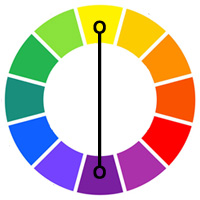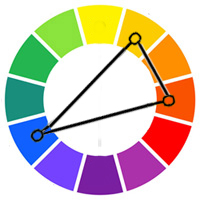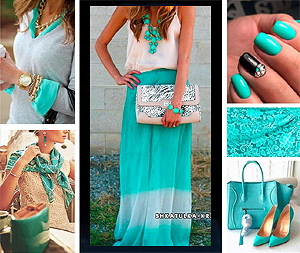Color
Combining Colors
mixing and matching outfits
compliment: an expression of admiration, an admiring remark
complement: something that completes or makes better or perfect
The scarf is a perfect complement to her outfit.
complementary colors:
1. the relationship of pairs of colors perceived as completing or
enhancing each other
2. colors that are directly opposite each other
on the color wheel ~ examples of complementary color pairings are red
and green, blue and orange, and yellow and violet.
Color, both art and science
Achieving the "power of color" begins with understanding both color theory and the color wheel. Color is the most subjective and powerful of all art and design elements (line, shape, form, texture). Color influences perception. It can trigger powerful emotional responses and asserts diverse meanings across the globe.
Colors are easily influenced by their surroundings; such as other colors, lighting, and the perception of the human eye. e.g. The Dress
Color Wheel or Color Model

The RYB color wheel consists of 12 colors where red, yellow, and blue are primary colors.
Consisting of two or more colors, each color is positioned in a fixed relation
in the color wheel.
Learn more
about RYB Color Model
Customarily, there are 5 color schemes, or palettes, that are considered particularly pleasing and harmonious. Understanding how these colors work together will teach you how to coordinate your colors without clashing.
5 Color Palettes
Monochromatic
Monochromatic simply means a single color. Wearing varying shades of the same color works well. When the top and slacks are monochromatic shades, it creates a pulled together look that is easy on the eye.
Complementary Colors

Complementary colors are also referred to as opposite colors as they are opposite each other on the color wheel. They appear well-balanced and appealing.
Split Complementary Colors

Split Complementary colors may be challenging in achieving that put-together look. However, when done right, the result is dimensional, harmonious and flattering.
Triadic

Triadic colors are equal distance from each other on the color wheel. They tend to be quite vibrant. Let one color dominate and use the two others for accent.
Analogous

Colors that are next to each other on the color wheel are analogous. They are found in nature and usually match well. Choose one color to dominate, a second to support. The third color is used (along with black, white or gray) as an accent.
Color-coordinated Looks

Turquoise is said to be the most universally flattering color; teal shades of the hue suit darker haired and darker skin tones, and aqua shades suit those with fairer skin and hair. As turquoise is directly opposite orange on the color wheel, it's also the best hue to complement a suntan.
